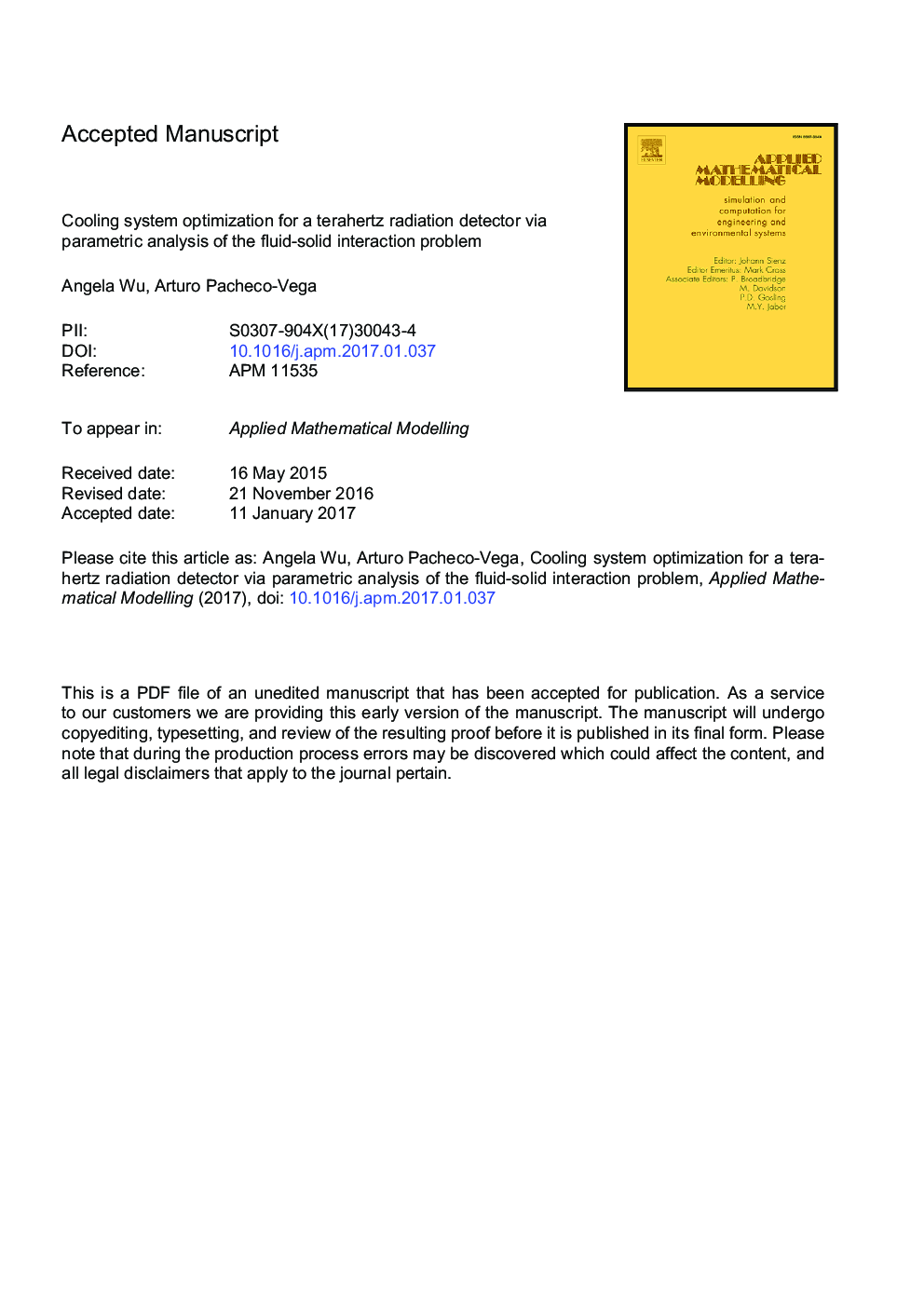| Article ID | Journal | Published Year | Pages | File Type |
|---|---|---|---|---|
| 5471239 | Applied Mathematical Modelling | 2017 | 44 Pages |
Abstract
The present study considers the optimization of a cooling system incorporated in a radiation detector working on the principle of liquid crystal thermography. Its configuration is that of a rectangular channel of small aspect ratio - inside of which cold water flows - that is directly attached to an extremely-thin detection element, made out of a thermochromic liquid crystal (TLC) layer fixed to a polyester sheet. The analysis places special attention at seeking for the optimal channel height/gap that enables a stable thermal environment for the sensing unit while minimizing its possible deformation. The optimization is carried out by way of a parametric study, based on numerical solutions of a fully-coupled non-dimensional mathematical model describing the fluid-solid mechanical interaction and conjugate heat transfer, for a set of expected operating conditions to establish the relative influence of inlet velocity, heat input and the channel height/gap on the variation in fluid temperature and the solid elastic deformation. It is shown that although quantitatively different, qualitatively the results have similar trends. By defining the corresponding two-objective function, the numerical simulations indicate that, for the set of operating conditions studied, there is a common value for the height/gap of the cooling channel which represents the optimal.
Keywords
Related Topics
Physical Sciences and Engineering
Engineering
Computational Mechanics
Authors
Angela Wu, Arturo Pacheco-Vega,
